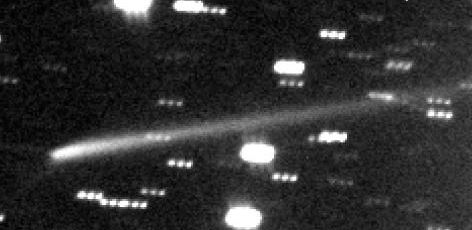
What you see here is something mankind has never seen before, the aftermath of an asteroid collision. This conclusion comes after the Hubble Space Telescope was commanded to take a closer look at a strange comet-like object pottering around in the asteroid belt between the orbits of Mars and Jupiter.
“The truth is we’re still struggling to understand what this means,” said David Jewitt, a planetary physicist from UCLA. “It’s most likely the result of a recent collision between two asteroids.”
After P/2010 A2 was discovered in January, Jewitt managed to get observation time on Hubble to get a closer look of what was thought could be a rare asteroid-comet hybrid.
In the image, the object named P/2010 A2 has a very obvious “X” on its surface shaped pattern in its tale, possibly the location where a smaller body slammed into it at high speed. The result of this hyper-velocity impact produced a lot of debris and scientists think the comet-like tail being swept back by the pressure of the solar wind is dust and outgassing volatiles (like subliming water ice).
Although this kind of event has never been observed before, over the lifetime of the evolving solar system, events like this occur on a regular basis, in fact asteroid collisions have shaped the asteroid belt. Interestingly, it is thought this impact was caused by a collision of a “Flora family” asteroid, a type of object that may have wiped out the dinosaurs 65 million years ago. (Don’t worry, this collision won’t affect Earth in any way, the dinosaur thing is simply an interesting connection!)
What an incredible discovery, it’s fortunate that we have Hubble’s excellent eyesight to peer deep into the asteroid belt…
Sources: Reuters, Discovery News



